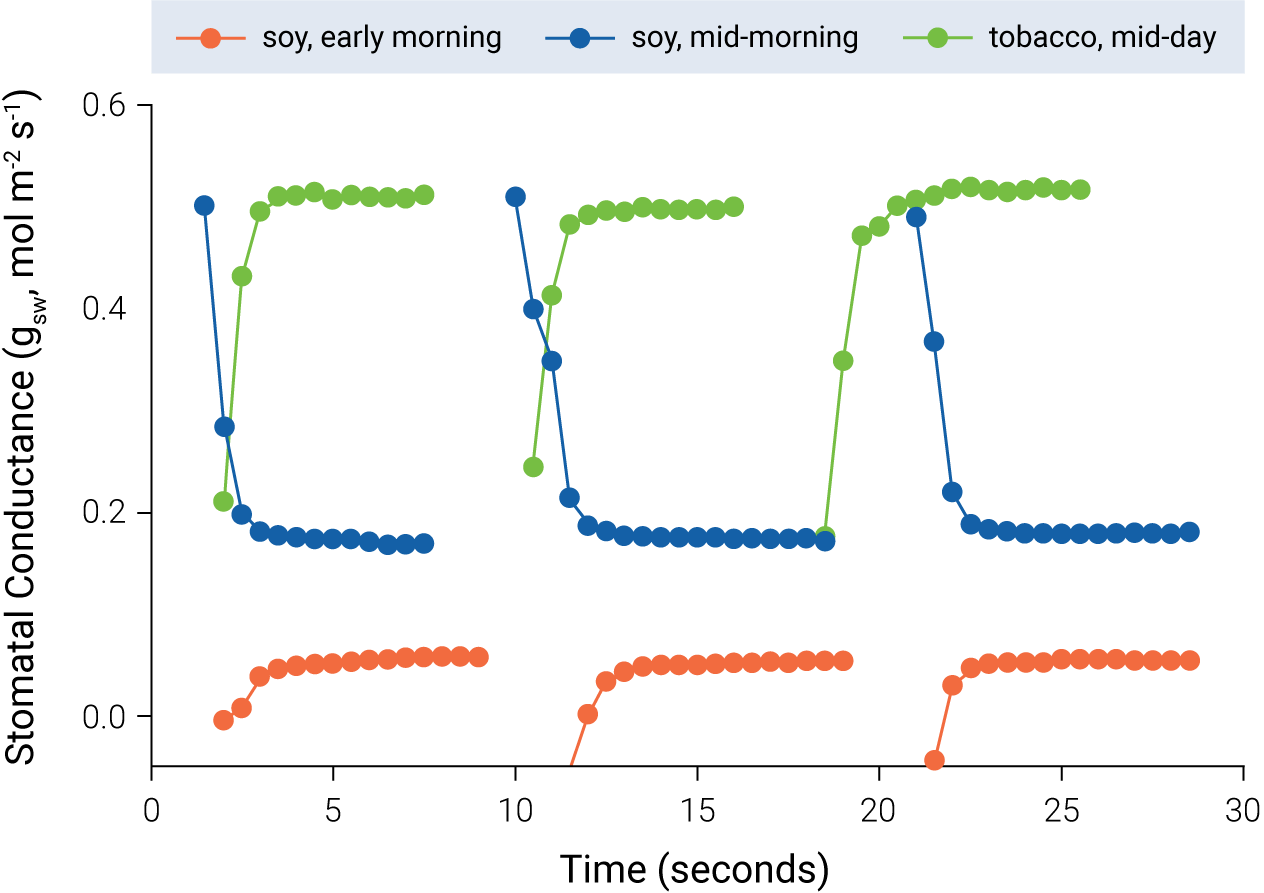Canada’s Instrumentation Leader Since 1946.

The LI-600 and LI-600N are compact porometers with Pulse-Amplitude Modulation (PAM) fluorometers that simultaneously measure stomatal conductance and chlorophyll a fluorescence over the same leaf or needle area. A GPS receiver tracks location and an accelerometer/magnetometer records data needed to calculate a leaf's angle of incidence to the sun. Capable of completing these measurements in seconds, the LI-600 and the LI-600N deliver speed and precision.
The LI-600 brings together numerous innovative technologies to deliver fast, accurate, and dependable measurements in a compact, handheld device.
The LI-600 uses an open flow-through differential measurement for quantifying transpiration (E) and stomatal conductance on one side of the leaf. First, E is quantified by measuring the flow rate and water vapor mole fraction of air that enters and leaves the chamber. Meanwhile, total conductance to water vapor (gtw) is computed as a function of E and vapor pressure in the leaf and cuvette. Finally, stomatal conductance to water (gsw) is computed as a function of gtw and the boundary layer conductance to water vapor (gbw).
The advantages of the LI-600 measurement flow path include the following:


Stomatal openings regulate the exchange of water vapor and CO2 between a leaf and the air. Stomatal conductance to water (gsw), which responds to light, CO2, temperature, and humidity, among others, is a measure of the degree of stomatal openness and the number of stomata. It is an indicator of a plant’s genetic makeup and physiological response to environmental conditions.
Measurements of chlorophyll a fluorescence can provide information about the leaf’s quantum efficiency, electron transport rate (ETR), non-photochemical quenching (NPQ), as well as an assortment of reactions that collectively protect a leaf when it absorbs excessive light energy.
Measurements of chlorophyll a fluorescence provide insights into photosynthesis, and, when combined with stomatal conductance, results in a more complete picture of the overall plant physiology and health. In addition to rectangular flashes, the LI-600 and LI-600N support multiphase flashes (MPF), which can prevent underestimation of Fm‘ (Loriaux et al., 2013) and thereby reduce bias in numerous fluorescence parameters.
The angle of incidence of a leaf– its orientation to the sun at a given time and place–is a useful variable for understanding a plant’s architecture and its physiological responses to the environment. A leaf’s angle of incidence may change, for example, to maximize light intensity for photosynthesis, minimize light intensity to conserve water, or allow light through a canopy to lower leaves. Knowing the angle of incidence of a leaf can lead to insights into how light intensity drives photosynthesis, and into the differences in measurements taken on the same plant.
The accelerometer/magnetometer measures three variables–heading, pitch, and roll–and the GPS receiver records leaf location and solar position. The LI-600/LI-600N software uses these data to calculate the angle of incidence for each leaf measurement, allowing researchers to evaluate a plant’s environmental status more thoroughly.

Copyright - 2025 - Hoskin Scientific